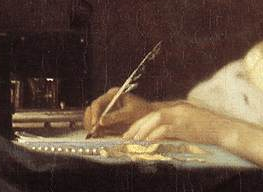30 sept. 2017, Tallinn : Measure Every Wandering Planet’s Course. Residential Systems in Early Modern Europe (1400–1750)
Fifth International Meeting
National Library of Estonia
Tallinn 2018, June 13–16
CALL FOR PAPERS
Submission deadline : September 30, 2017
At the crossroads of architectural history, court studies and urban studies, this session will address the interaction between the different residences of the early modern élite in Europe from the waning of the middle ages until the dawn of the Industrial Revolution, exploring them as parts of an integrated system or network on different geographic scales. The noble way of life was essentially nomadic, mirroring the constant migration of the reigning princely court in early modern Europe, dictated not only by political necessity (including especially war) but also by pleasure (e.g. war’s mirror image, the hunt). Complex itineraries thus linked the often extremely scattered noble possessions with the centers of gravity of court life in a single ‘planetary’ system. While the ‘nomadic‘, and seasonal, character of the noble way of life has been generally recognized, there has been no attempt as yet to do the same for the elites at a lower level than that of the reigning prince, let alone for the urban patriciate and merchant class. The latter nevertheless also migrated between townhouse (with or without commercial infrastructure), suburban property, and rural domain, serving as economic and socio-cultural investment (especially if tied to a noble title). Interaction between different social levels have not been looked at from a spatial perspective, leaving open pressing questions on the architectural plane.
Papers will explore particular conjunctions of residences beyond the classic opposition of town/country (to which in the early modern era is added the “villa”, suburban or pseudo-rural but not fortified and with urban formal characteristics), thus revisiting and revising standard typologies within a broader framework. Case-studies might address questions such as the interplay between the patron’s itinerary and the development of particular residence types, explore architectural exchanges between particular patrons or social groups in this perspective, or review the whole spatial footprint of a patron in its entirety. They will pay particular attention to the role(s) each residence might fulfil within the strategy of self-representation of the patron in relation to his/her rank and position, and to the evolution of that role in response to changing aspirations.
Krista De Jonge,
KU Leuven,
krista.dejonge chez kuleuven.be
Birgitte Bøggild Johannsen,
National Museum of Denmark,
birgitte.b.johannsen chez natmus.dk
Konrad Ottenheym,
Utrecht University,
k.a.ottenheym chez uu.nl




